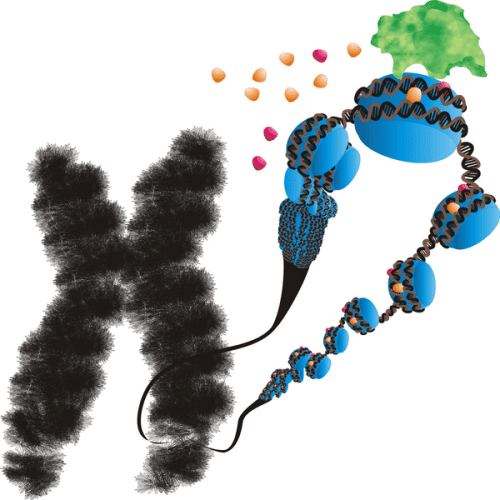Fragile X syndrome is not a very pleasant thing. One in 4,000 men and one in 6,000 women are born with it in their genetic code. Among its other effects, it causes many of those affected by it to develop learning problems, behavioral problems, hyperactivity and difficulty focusing attention.

Now they are starting to find a solution to the syndrome, using the most advanced techniques of genetic engineering.
The main damage bsyndrome It results from the silencing of one gene - FMR1 - in the genetic code. About a year and a half ago they showed a researcherThey are able to use a new and powerful technique in genetic engineering, called Crispr-CAS, to reactivate the gene [1]. Now another study has been released by one of the most respected researchers in the field of genetic engineering - Rudolph Jainisch - who used the same technique to turn on the gene. Yeinisch did another little trick: instead of changing the structure of the genetic code itself (something that makes many shy away from the technology), he simply identified the small 'tags' that sit on the DNA in that region of the gene, and removed them from there. And that's it - that's all that had to be done for the garden to work again [2]. In this way, no changes were made in the genetic code that could be passed on to the next generation (although it is hard to believe that someone would want to pass this syndrome on to their offspring).
At the moment, all the experiments were conducted with human cells in Petri dishes, but the surprising thing is that the reactivation of FMR1 caused the neurons in the dish to stop their fragmented pattern of action, and start functioning more regularly - like the neurons of healthy people.
Now, it should be clear: don't think that this syndrome will have a solution tomorrow morning. These are only a few preliminary experiments that demonstrate the feasibility of treatment, and it is still not clear whether genetic engineering of the nerve cells in the brains of child or adult carriers will cure the symptoms. But this is a promising first swallow, and it will bear fruit at some stage. As science continues to develop, we will find the way to deal with this genetic disease as well. And not only with her: also with other genetic diseases such as Engelmann, Frieder-Willi syndrome, and maybe even Alzheimer's and Parkinson's (in cases where these diseases result from mutations in the genetic code).
So yes - there is hope, and it will continue and grow.
Sources
[2] - Rescue of Fragile X Syndrome Neurons by DNA Methylation Editing of the FMR1 Gene

3 תגובות
Does FXIOP also belong to be fixed by CRISPR CAS9?
I have a child with syndrome, I would be very happy to hear about the experiments and participate in them
Not a genetic change that "just" removed switches: a change in epigenetics is also a genetic change, and the truth is that we still don't know enough about epigenetic inheritance